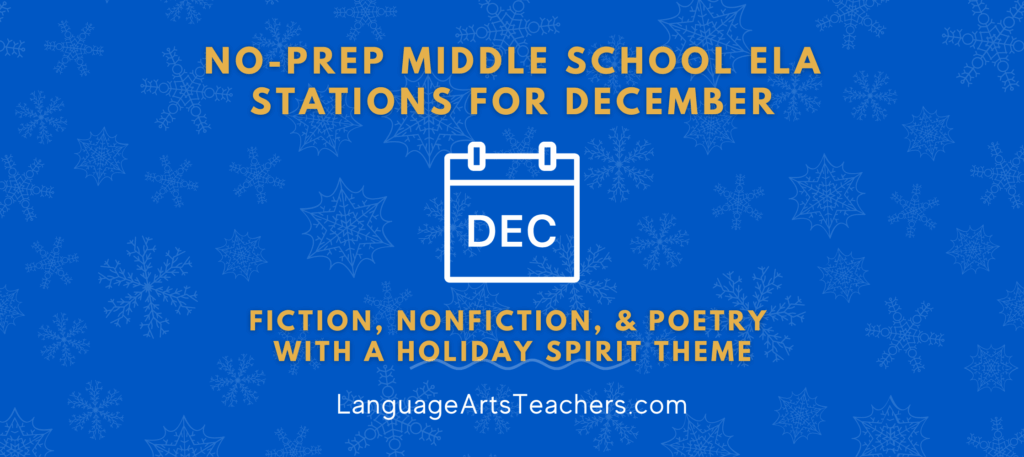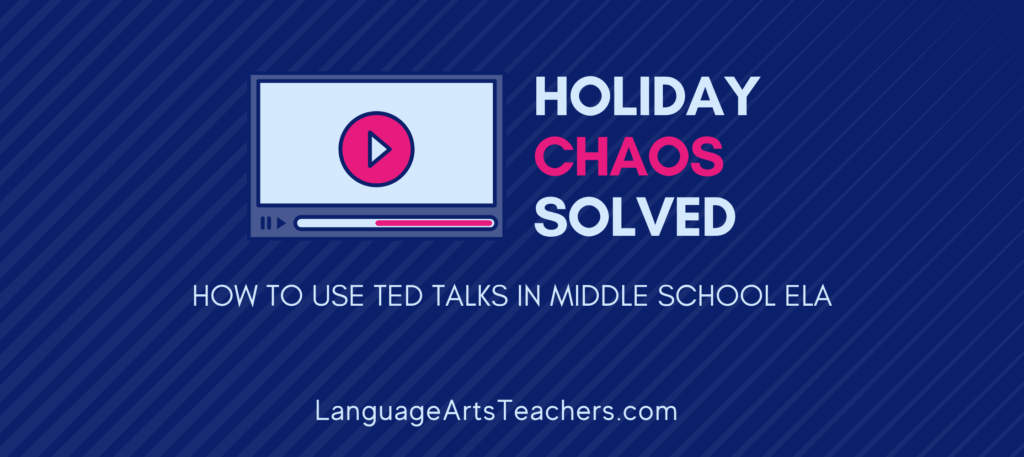SUPERQUICK literature centers in the 6th grade ELA classroom
Why I use literature centers in my 6th grade language arts classroom
-
I need a way to reteach important concepts all through the year
-
Students need a way to work on extension activities without much teacher input
-
When I need to spend time working with a small group of kids on guided reading or small group instruction, I need to make sure the rest of the class is working on something tangible that they will have to turn in
-
I can set up these literature centers “in bulk” at the beginning of the six weeks and then that’s it– I’m done with them for six more weeks and all the small group activities are taken care of!
My basic “rules” for “Literature Center” time
-
We don’t have Literature Center time every day. We have time maybe 2-3 days each week.
-
Students may work with 1-3 other students (no huge groups allowed).
-
There is always a “product” to turn in so students are held accountable.
-
Each literature center is designed to take around 20 minutes or so (which is the amount of time I spend in guided reading or small group instruction)
-
I do NOT grade all of these! I literally only have 2 – 3 out of 10 – 12 that I actually grade. The students do NOT know this, though. In my grade book, I have one grade each six weeks listed as “Lit Center” and I put in the average of the 2-3 I actually grade.
How I create them quickly, easily, and with little-to-no prep
-
I use materials, lessons, and activities I already have but don’t have time to actually teach
-
I make sure each lit center activity is “student friendly” with simple, clear instructions
-
Each literature center is either something I’ve taught before, or it’s a skill that students need to constantly practice
How I find time to create the literature centers each grading period
-
Create them in bulk (i.e. get it all done at once)
-
Put them together during a test day when your students are taking a test and you can keep them while also working
-
Before this magical test day, start gathering materials that you think or know would make good literature center materials– throw them in a cardboard box or something so you can just pull them out when it’s time to make them
What materials I use for each set of literature centers:
-
Student-friendly magazines (Time for Kids, Scholastic Scope, anything our school has bough that I can use– and they don’t even have to be updated or recent.)
2. Magazine ads I collect and just throw to the side for literature centers (I can do author’s purpose and media messages with those!)
3. Materials that I only have a few copies of and not whole-class sets (like 6 little poetry books I found in the book room)
4. Short stories in the textbook I wanted to read with my class but didn’t have time
5. Student choice– As in “Choose any 5 vocabulary terms from the past and do this and this with them.”
For each literature center, I started out using gallon-sized plastic ziplock bags from the dollar store and I kept them in a file cabinet drawer that the students knew they could access.
The downside is that to me at least, it always seemed kind of messy and “floppy” so I switched to these clear plastic boxes I got from the dollar store (Family Dollar, to be specific).
Here are 10 centers for 6th grade ELA based on what I’ve taught before (so the kids can pretty much do them on their own while I work with a small group of reading students)…
1) Vocabulary challenge – Write a script (play) with your group that uses any 10 vocabulary terms we’ve learned so far. The characters in your play can be real (yourselves) or fictional.
2) Choose two poems from our literature book that you think are similar to each other (it could be a similar theme, or topic, or setting, or description, etc.) Create a Venn diagram that shows the similarities / differences between the two poems.
3) Create a worksheet that helps younger kids understand the difference between ellipses, brackets, parentheses, and hyphens.
4) Write a one-page story that shows what you know about how to use quotation marks for dialogue. Hi-light each set of quotation marks.
5) Read the short story called “Insert a story from your textbook or other resource” and draw / label a plot diagram for it.
6) Students need their library book (or other book you’re reading). Make a one-page “poster” on plain printer paper that shows the internal and external conflicts of the main character. Color the paper and give examples from the book of the conflicts.
7) Fill the box with advertisements you get in the mail. Junk mail! Put a bunch of them in their for a wide selection. Next, include some instructions that will have the students go through the ads and choose one. They can write about the following:
Describe what the ad is selling (product or service).
What does the ad want you to do?
How do the ad’s colors help “sell” the product?
What does the fine print say?
Explain what is most appealing about the ad.
Who is the intended audience?
What is the most persuasive part of the ad?




